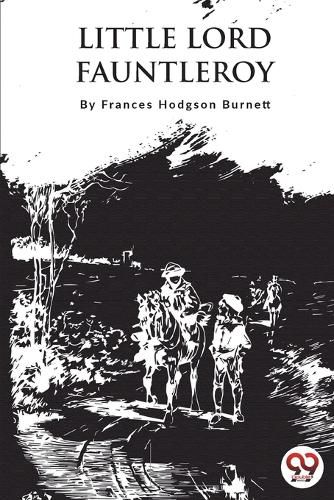Readings Newsletter
Become a Readings Member to make your shopping experience even easier.
Sign in or sign up for free!
You’re not far away from qualifying for FREE standard shipping within Australia
You’ve qualified for FREE standard shipping within Australia
The cart is loading…






This title is printed to order. This book may have been self-published. If so, we cannot guarantee the quality of the content. In the main most books will have gone through the editing process however some may not. We therefore suggest that you be aware of this before ordering this book. If in doubt check either the author or publisher’s details as we are unable to accept any returns unless they are faulty. Please contact us if you have any questions.
Frances Hodgson Burnett wrote a book titled Little Lord Fauntleroy. From November 1885 to October 1886, it was published as a serial in St. Nicholas Magazine. In 1886, Scribner's (St. Nicholas' publisher) published it as a book. When Burnett prevailed in a legal battle against E. V. Seebohm in 1888 for the rights to stage adaptations of the work, the novel established a precedent in copyright law, setting fashion trends with the illustrations by Reginald B. Birch. The Anglo-French surname Fauntleroy, which conveys the idea of being spoiled and pampered, is ultimately derived from Le enfant le Roy ("child of the king"). It is derived more closely from the Middle English version of defect from infant, which means child or infant. As a legitimate surname, it has been used since the 13th century. The Earl intended to impart aristocratic values to his grandson. Cedric instructs his grandfather instead on the virtue of having compassion for others who are reliant upon him. The Earl matures into the person Cedric had always mistakenly assumed him to be. Cedric is delighted to be reunited with his mother and Mr. Hobbs, who chooses to remain to assist in caring for Cedric.
$9.00 standard shipping within Australia
FREE standard shipping within Australia for orders over $100.00
Express & International shipping calculated at checkout
This title is printed to order. This book may have been self-published. If so, we cannot guarantee the quality of the content. In the main most books will have gone through the editing process however some may not. We therefore suggest that you be aware of this before ordering this book. If in doubt check either the author or publisher’s details as we are unable to accept any returns unless they are faulty. Please contact us if you have any questions.
Frances Hodgson Burnett wrote a book titled Little Lord Fauntleroy. From November 1885 to October 1886, it was published as a serial in St. Nicholas Magazine. In 1886, Scribner's (St. Nicholas' publisher) published it as a book. When Burnett prevailed in a legal battle against E. V. Seebohm in 1888 for the rights to stage adaptations of the work, the novel established a precedent in copyright law, setting fashion trends with the illustrations by Reginald B. Birch. The Anglo-French surname Fauntleroy, which conveys the idea of being spoiled and pampered, is ultimately derived from Le enfant le Roy ("child of the king"). It is derived more closely from the Middle English version of defect from infant, which means child or infant. As a legitimate surname, it has been used since the 13th century. The Earl intended to impart aristocratic values to his grandson. Cedric instructs his grandfather instead on the virtue of having compassion for others who are reliant upon him. The Earl matures into the person Cedric had always mistakenly assumed him to be. Cedric is delighted to be reunited with his mother and Mr. Hobbs, who chooses to remain to assist in caring for Cedric.